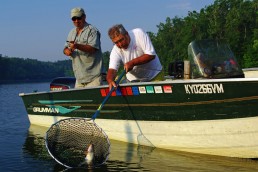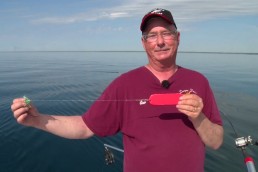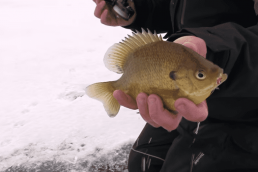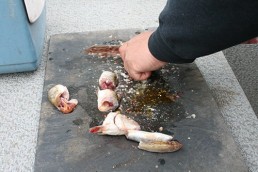The Angry Catfish of Spring
SHARE THIS POST
Catfish can be caught year ’round, but the best time is when their reproductive urges overcome their caution and good sense. This takes place when the water temperatures reach 80 degrees in May or June, depending upon your latitude. These fish become so aggressive during the spawn that bass fishermen often catch them on crankbaits and other lures. This rarely happens at other times of the year, but I’ve had days as a bass fishing guide on Kentucky Lake during spawn when I’ve caught as many channel cats as bass on medium- and shallow-running crankbaits.
I’m not suggesting that you fish for catfish with crankbaits. My point is that during the spawn they seem angry enough to eat or attack anything that comes near them. But to catch them consistently you have to get real, because a catfish is a “swimming tongue.” Their main tool for making a living is imbedded in their barbells—those whiskers that inspired their common name. Each barbel is loaded with taste buds, as are their outer lips, gill rakers and even some of their body.
In water, smell and taste molecules are the same thing. Sometimes you and I might get a whiff of something that smells so good we can almost taste it. But when a catfish gets a whiff of something, it literally tastes it just as surely as if it were in its mouth. Be sure to avoid getting gasoline, sunscreen, and insect repellent on your hands and inadvertently on your bait. Catfish hate these smells.
Usually, catfish take their time eating something, but during the spawn their territorial instincts make them crazy and impulsive. Maybe all that hanky-panky makes them hungry, but at any rate, in the right spot fishing can be fast, so one pole is all you might be able to handle.
For most of the year they spend their time haunting deep places where the sun is shunned, moving shallow under the secure cover of darkness. But reproductive urges reverse that. Catfish not only feed more aggressively during the spawn, they also congregate in the shallows during the day when most people like to fish for them.
Are you enjoying this post?
You can be among the first to get the latest info on where to go, what to use and how to use it!
Early morning, late evening and just before a storm are the best times, but when catfish are preoccupied with the urge to make more catfish, they’ll inhabit the sunlit shallows, even at midday. They line the rocky shores and riprap banks to perform their reproductive duties and they get angry or crazy enough to eat anything that can’t eat them.
Most catfishing is done with heavy weights cast far out into a lake to reach the deeper water, but during the spawn this method goes way over their heads. A lighter weight under a bobber fished relatively close to shore (4- to 6-feet deep) will catch these whiskered Romeos.
Live worms are the most common baits, and if you use them, don’t be stingy. Weave them on to create a wiggling glob. This is much more attractive than a single nightcrawler threaded onto a hook. Besides, threading a worm on the hook kills it quickly. Some mistakenly think catfish are scavengers. They will devour the dead as long as they are not too long gone, but they’re not the slimy garbage disposals some believe. Keep your live bait alive and your cut bait as fresh as possible.
Luck is something most catfishermen sit around waiting for, but it’s not much different than other types of fishing. The luckiest fishermen are those who increase their odds through their own efforts. Luck is mostly about being in the right place at the right time so don’t let any catfish bait sit in one place for more than 15 minutes. If there are cats nearby, the “swimming tongue” and its taste buds will find it within that time. If you don’t get a bite within 15 minutes just reel in a few yards or cast to a different spot. This method covers varying bottom types, searching for fish instead of just waiting for hours in the same spot for a catfish to come to you. If a particular area does not produce after an hour or so, move.
Don’t be afraid to cast near logs and stumps. The bigger cats like to stay near some type of cover and like to spawn in logjams and hollow logs. The old adage often used by crappie fishermen applies equally to catfishing: “If you aren’t getting hung up once in a while you’re not fishing in the right place.”
MWO
SHARE THIS POST
Did you enjoy this post?
You can be among the first to get the latest info on where to go, what to use and how to use it!
Ron Kruger
Ron Kruger has been communicating the outdoor experience for more than four decades. He has worked as a full-time guide for trout on the North Fork, for crappies and bass on Kentucky Lake and for smallmouths on the Current River. He has served as editor of three outdoor magazines, and owns a patent on a fly/lure called the Desperate Diver.



